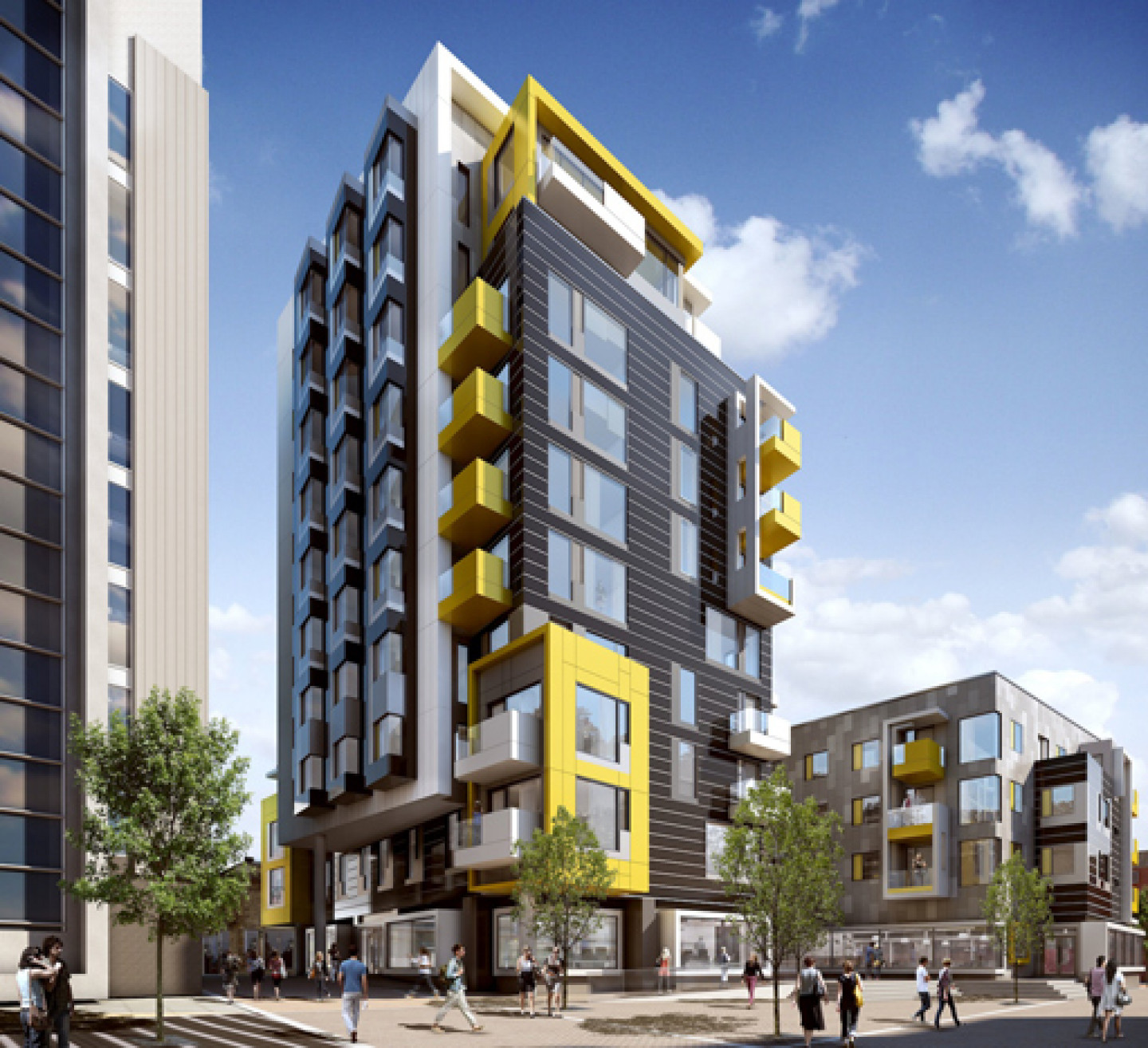Located in the heart of the former Smithfield market in Manchester’s Northern Quarter, one Smithfield Square sees the construction of 77 one, two and three-bed residences for private sale; approximately 590m2 of ground-floor retail space; as well underground parking, covering a total of nearly 3,490 m2. This latest phase, worth £10.75m, is being constructed by Galliford Try and is the sixth phase of the award-winning Smithfield regeneration scheme, delivered by Ician Developments, a wholly-owned subsidiary of Muse Developments, in partnership with Manchester City Council.
Unlike conventional mixed-use buildings, the box style architecture of the interconnected 4-storey and 9-storey Smithfield buildings required a specialist structural design. The fac¸ades feature cantilevered square and rectangular elements, with all-round balconies providing a contemporary irregular façade on all sides.
Metsec won the supply chain contract with Galliford Try to deliver a value-engineered steel framing system (SFS), as it was the only manufacturer capable of providing a high-performance yet cost-efficient technical solution.
While the original plans for the project relied on hot rolled steel framing, Metsec developed a zero-waste cold rolled steel framing system, capitalising on its experience in manufacturing cost-effective light-gauge galvanised steel constructions. With in-house engineering, design and 3-D building information modelling (BIM) expertise, Metsec was able to respond to the challenge.
“We wanted a supplier who could offer a value-engineered solution and had the experience of working within BIM. Metsec’s designers supported the process by producing a 3-D model of the SFS that could be incorporated effortlessly into the master model. It showed that small changes, especially around the balconies and bay windows where hot rolled steel elements were replaced with cold rolled steel, could go a long way in reducing the amount of material used,” says Sean Merriman, Design Coordinator at Galliford Try.
Crucially, the application of BIM successfully omitted 25% of the amount of steel used in the building and thus helped to reduce overall construction costs. Roy Burns, Divisional Managing Director for Lightweight Structural Systems at Metsec, explains: “According to a traffic light system, we colour-coded all sections that were fit to remain, those that could be replaced with cold rolled steel and those that needed to be evaluated individually in the model that had been developed by Galliford Try’s design team. Eventually, our team designed a high-performance solution that makes optimal use of cold rolled steel.”
“The beauty of BIM is that it helps us to understand the building requirements right away and to identify potential shortcomings from an early stage. This is how we assist the contractor effectively by means of a multi-dimensional resource that is understood industry-wide and that allows us to work off the same base throughout the project. Where there is no model provided by the contractor, we have the capability to develop one in-house to aid the design and detailing process. Not least, model-sharing fosters real collaboration, which I believe will gain more importance across the supply chain in the future, particularly between subcontractors,” Roy Burns emphasises.

